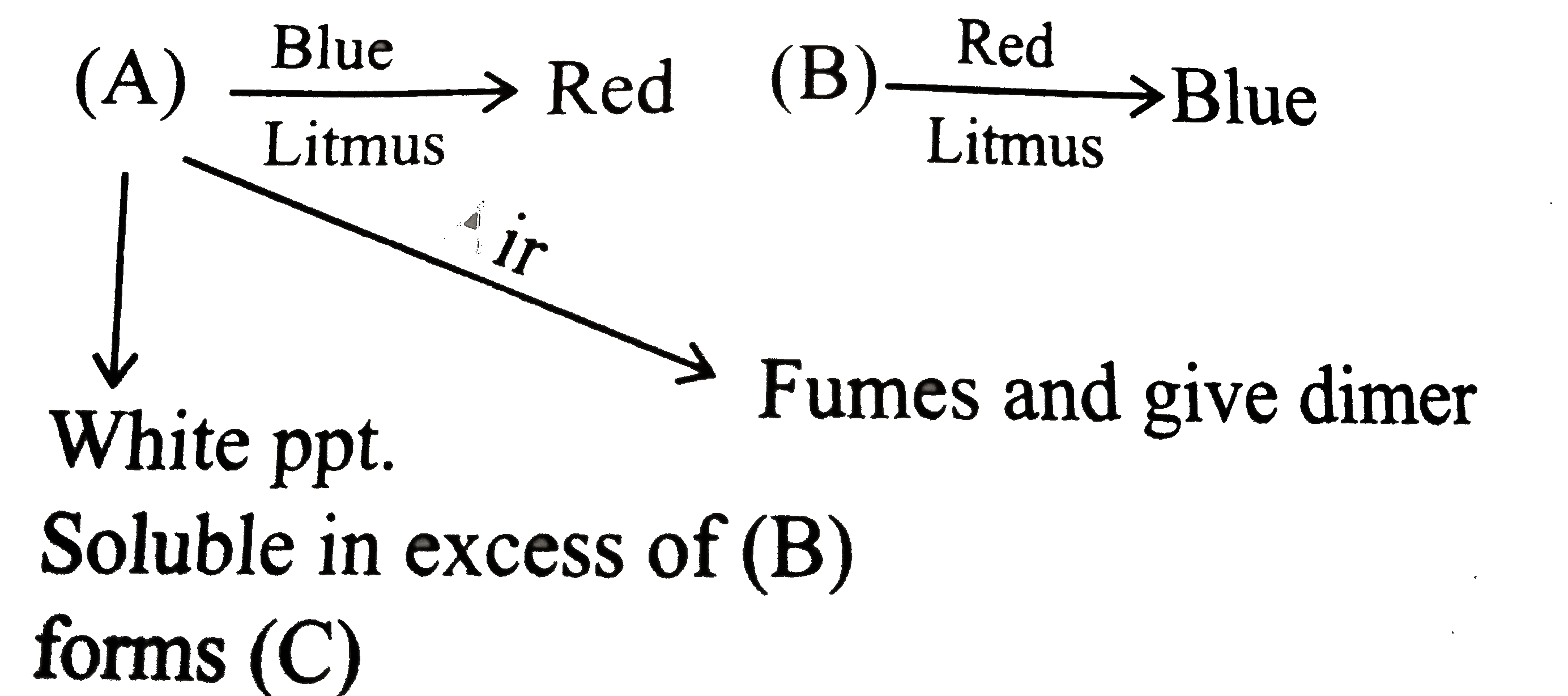Which is colourless in H2O ?
Ti3+
V3+
Cr3+
Sc3+
The correct Answer is:D
To determine which ion is colorless in water among Titanium (Ti), Vanadium (V), Chromium (Cr), and Scandium (Sc), we need to analyze the electronic configurations of their respective ions in the +3 oxidation state.
1. Identify the Atomic Numbers and Electronic Configurations:
- Titanium (Ti): Atomic number 22, electronic configuration: (Ar) 3d² 4s²
- Vanadium (V): Atomic number 23, electronic configuration: (Ar) 3d³ 4s²
- Chromium (Cr): Atomic number 24, electronic configuration: (Ar) 3d⁵ 4s¹
- Scandium (Sc): Atomic number 21, electronic configuration: (Ar) 3d¹ 4s²
2. Determine the Electronic Configuration of Each Ion in +3 State:
- For Ti³⁺: Remove 3 electrons (2 from 4s and 1 from 3d)
- Configuration: (Ar) 3d¹ 4s⁰
- For V³⁺: Remove 3 electrons (2 from 4s and 1 from 3d)
- Configuration: (Ar) 3d² 4s⁰
- For Cr³⁺: Remove 3 electrons (1 from 4s and 2 from 3d)
- Configuration: (Ar) 3d³ 4s⁰
- For Sc³⁺: Remove 3 electrons (2 from 4s and 1 from 3d)
- Configuration: (Ar) 3d⁰ 4s⁰
3. Analyze the Number of Unpaired Electrons:
- Ti³⁺: 1 unpaired electron (3d¹)
- V³⁺: 2 unpaired electrons (3d²)
- Cr³⁺: 3 unpaired electrons (3d³)
- Sc³⁺: 0 unpaired electrons (3d⁰)
4. Determine Color in Aqueous Solution:
- Ions with unpaired electrons typically exhibit color due to d-d transitions.
- Ti³⁺, V³⁺, and Cr³⁺ have unpaired electrons and will show color in solution.
- Sc³⁺ has no unpaired electrons and will not show color in solution.
5. Conclusion:
- The ion that is colorless in water is Scandium (Sc³⁺).
- Titanium (Ti): Atomic number 22, electronic configuration: (Ar) 3d² 4s²
- Vanadium (V): Atomic number 23, electronic configuration: (Ar) 3d³ 4s²
- Chromium (Cr): Atomic number 24, electronic configuration: (Ar) 3d⁵ 4s¹
- Scandium (Sc): Atomic number 21, electronic configuration: (Ar) 3d¹ 4s²
- For Ti³⁺: Remove 3 electrons (2 from 4s and 1 from 3d)
- Configuration: (Ar) 3d¹ 4s⁰
- For V³⁺: Remove 3 electrons (2 from 4s and 1 from 3d)
- Configuration: (Ar) 3d² 4s⁰
- For Cr³⁺: Remove 3 electrons (1 from 4s and 2 from 3d)
- Configuration: (Ar) 3d³ 4s⁰
- For Sc³⁺: Remove 3 electrons (2 from 4s and 1 from 3d)
- Configuration: (Ar) 3d⁰ 4s⁰
- Ti³⁺: 1 unpaired electron (3d¹)
- V³⁺: 2 unpaired electrons (3d²)
- Cr³⁺: 3 unpaired electrons (3d³)
- Sc³⁺: 0 unpaired electrons (3d⁰)
- Ions with unpaired electrons typically exhibit color due to d-d transitions.
- Ti³⁺, V³⁺, and Cr³⁺ have unpaired electrons and will show color in solution.
- Sc³⁺ has no unpaired electrons and will not show color in solution.
- The ion that is colorless in water is Scandium (Sc³⁺).
Topper's Solved these Questions
- D AND F-BLOCK ELEMENTSBOOK - MODERN PUBLICATIONCHAPTER - D AND F-BLOCK ELEMENTSEXERCISE - REVISION EXERCISES (OBJECTIVE QUESTION (MATCHING TYPE QUESTION))
4 Videos
- D AND F-BLOCK ELEMENTSBOOK - MODERN PUBLICATIONCHAPTER - D AND F-BLOCK ELEMENTSEXERCISE - REVISION EXERCISES (PASSAGE BASED QUESTION)
10 Videos
- D AND F-BLOCK ELEMENTSBOOK - MODERN PUBLICATIONCHAPTER - D AND F-BLOCK ELEMENTSEXERCISE - QUICK MEMORY TEST (C. CHOOSE THE CORRECT ALTERNATIVE)
12 Videos
- CHEMISTRY IN EVERYDAY LIFE BOOK - MODERN PUBLICATIONCHAPTER - CHEMISTRY IN EVERYDAY LIFE EXERCISE - UNIT PRACTICE TEST
13 Videos
- ELECTROCHEMISTRY BOOK - MODERN PUBLICATIONCHAPTER - ELECTROCHEMISTRY EXERCISE - UNIT PRACTICE TEST
20 Videos
Similar Questions
(a). Why Mn2+ compounds are more stable than Fe2+ towards oxidation to their +3 state?
(b). Calculate the magnetic moment of V3+ ion.
(c). [Ti(H2O)6_3+ gives violet coloured aqueous solution but
[Mg(H2O)6]2+ solution is colourless.
(d). [Ti(H2O)6]3+ is coloured whereas [Sc(H2O)6]3+ is colourless. Why?
View SolutionA solution of [Ni(H2O)6]2+ is green but a solution of [Ni(CN)4]2− is colourless Explain.
View Solution
Knowledge Check
Which are soluble in H2O ?
AgF,AgCl, AgBr,AglAAgF, AgBr, AgIBAgI, AgFCAgFDAgI, AgCl.O2F2 is an unstable yellow change solid and H2O2 is a colourless liquid, both have O−O bond and O−O bond length in H2O2 and O2F2 respectively is :
A1.22Å,1.48ÅB1.48Å,1.22ÅC1.22Å,1.22ÅD1.48Å,1.48ÅA colourless mixture of two salts (A) and (B) [excess] is soluble in H2O.

Identify CANa2ZnO2BNaAIO2CNA2SnO2DNone of these
[Ni(CN)4]2− is colourless whereas [Ni(H2O)6)2+ is green. Why?
View SolutionA colourless mixture of two salts (A) and (B) [excess] is soluble in H2O.

Identify B
View SolutionA colourless mixture of two salts (A) and (B) [excess] is soluble in H2O.

Identify A
View SolutionWhich is false about H2O2?
View SolutionWhich compound forms a colourless solution when dissolved in H2O?
View Solution
